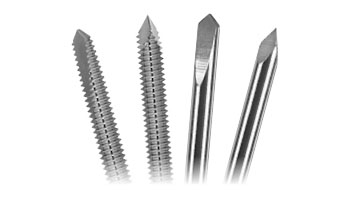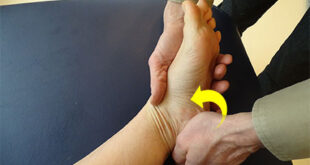As is often the case, history has left us with ingrained and confusing terminologies. The same is the case with Steinmann pins. Steinmann pins are the pins of the larger-diameter and are utilized in veterinary medicine. These pins were invented by a Swiss surgeon named Fritz Steinmann (1872–1932). He is generally given the credit of inventing and developing metal pins, which are used as a traction device for fracture stabilization. These pins are driven transversely through the skin and into the bone and were then used as anchor points to provide traction to the fracture in bed-ridden patients.
What is Steinmann Pin?
Steinmann Pins are most commonly called an intramedullary pin, used to repair fractures that cause minimal damage to the bone and soft tissue. These types of pins are made up of a thin metal rod that is usually used to control large bone fractures together during orthopedic surgeries. These pins work similar to K-Wire, although they are taller and broader than the K-wires. They are very useful in maintaining the axial alignments, and also provide resistance to bending loads and rotational forces. The use of these pins in orthopedic surgeries costs less to the patients as well.
Uses od Steinmann Pins
Some common uses of Steinmann pins are mentioned below.
- They are used in skeletal traction.
- They are used as reduction aid in many kinds of fractures, such as calcaneal fractures.
- They are also used as a part of the pin and plaster technique.
- They are also used to reduce and stabilize fractures, osteotomies, and fusions throughout the body.
Complications of Using Steinmann Pins
The following complications may occur while using Steinmann pins.
- The use of Steinmann pins may result in iatrogenic injury to vital bone structure (Iatrogenic injury refers to the damage caused to organs and tissues due to necessary medical treatment or the application of medical devices, and it has nothing to do with the primary disease).
- Steinmann pins can also cause pin tract infections.
- The use of Steinmann pins in skeletal traction can also result in the loosening of bones.
- The use of these pins may cause osteomyelitis, which may lead to characteristic ring sequestrum (Osteomyelitis is an infection in the bone, and these infections can enter the bone through the bloodstream or from nearby tissues. The infection can also begin in the bone itself if the injury exposes the bone to germs).
Steinmann Pin Definition
Steinman’s pin is a stainless steel pin that is used for internal fixation of fractures of long bones.
It is a thin surgical nail that passes through the lower end of the femur or the upper end of the tibia and is held under tension in a steel brace so that traction can be used to treat fractures.
Steinmann Pin Identification
If you see a smooth metallic rod with one end pointed and the other blunt and is made in accordance to fit into the drill, so that pin is a Steinmann pin.
Steinmann pins can also be identified from the following factors:
- They have precise grounds.
- They have smooth, tapered points that are expertly machined for easier penetration within the bones.
- They are also called intramedullary pins.
- Steinmann pins are available in a wide variety of styles and sizes.
- Some available styles of Steinmann pins include a double trocar, single trocar, double diamond, single diamond.
- These pins are available in two basic styles, either partially threaded or fully smooth pins.
- They are made from certified implant stainless steel.
- They are shipped non-sterile.
Steinmann Pin Size
Steinmann’s pins, also known as intramedullary pins or IM pins, are available in two basic styles: partially threaded pins or fully smooth pins. They are available in diameters from 1/16 to 1/4 inch (1.6 mm to 6.3 mm) in various lengths.
Steinmann pin vs. Denham pin
A pin, which is a smooth metallic rod, tapered at one end and blunt at the other, is called a Steinmann pin, and this can be either threaded or non-threaded. At the same time, a Steinmann pin, which has a threaded portion in the middle of the pin, is called a Denham pin.
A Denham pin has better holding power in bones than a conventional Steinmann pin, so it is preferably used in orthopedic surgeries for osteoporotic bones (which is skeletal traction in older age people) and also in calcaneal traction.
A Denham pin is also used in skeletal traction other than Steinmann pins, and it improves the holding power of skeletal traction.
 Health & Care Information
Health & Care Information 


